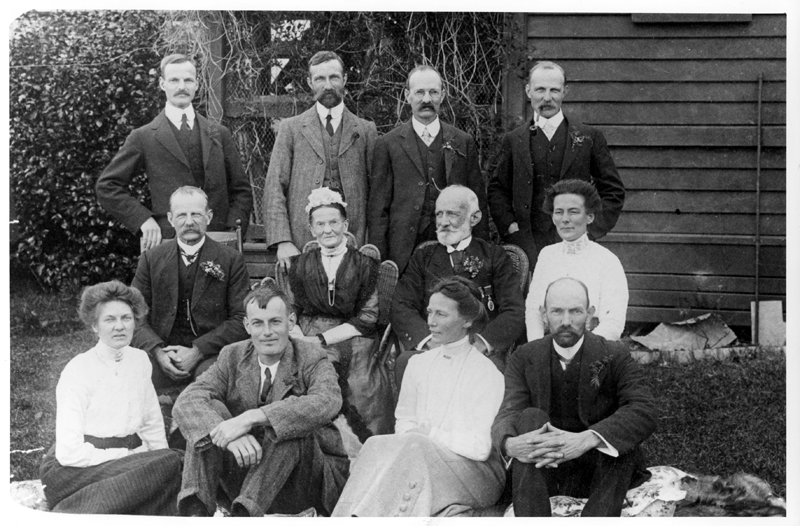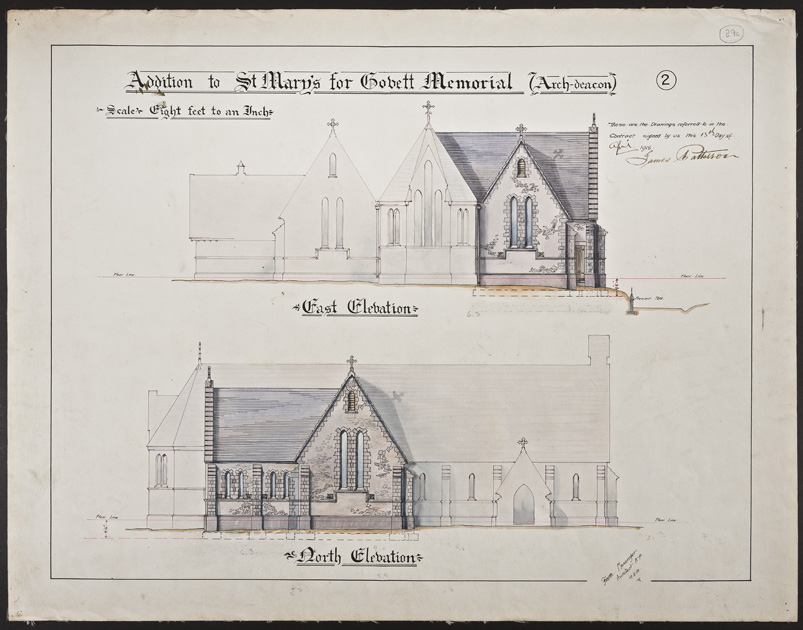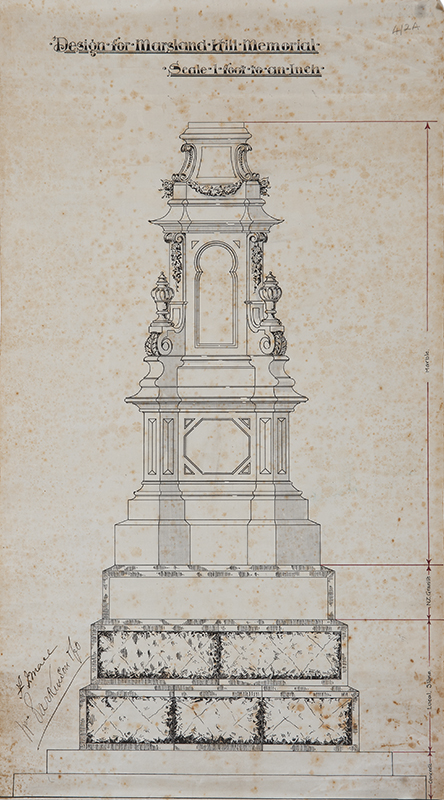



Ever wondered who designed New Plymouth's iconic Devonport Flats, the Cenotaph and the St Aubyn Chambers? Frank Messenger did. He might have grown up in a raupō whare, but he left a legacy of fine New Plymouth buildings - a staggering 315 in total.
In 1994, New Plymouth architect Ian Pritchard put together a book to celebrate the astounding lifetime achievements of Frank Messenger. Messenger worked as an architect from 1879 to 1945, during which time he designed or helped design 315 buildings and monuments in and around New Plymouth.
Pritchard describes him as “a small time architect” though there is nothing patronising about his words. Messenger worked for 66 years - a long time for anyone to be in any business. Though many of the structures he designed, or drew up in consultation with partners, still remain in Taranaki, Pritchard was appalled to discover that very few local architects knew of him.
When it comes to Frank Messenger and New Plymouth buildings, it's almost a case what didn't he design. Messenger designed many iconic commercial buildings like the Devonport Flats and the St Aubyn Street Chambers. He drew the plans for the New Plymouth Fire Station, the Taranaki Jockey Club, the Steward's Stand, the Grandstand and the city's first public library. He was also responsible for St. John's Church Anglican at Kaimata, Inglewood's St Andrew's church and Town Hall, as well as the Sisters of our Lady of the Missions in central New Plymouth.
Then there were the buildings at New Plymouth Girls' High School and the Boarding House and Carrington House at New Plymouth Boys' High School. Messenger designed Barrett Hospital Nurse's home and the doctor's residence across the way.
As well as a large number of private residences, he also designed the Cenotaph and the monument on top of Marsland Hill, using his brother as a model for the soldier on top. The figure was smashed by Treaty of Waitangi protesters in February 1991 and has never been replaced.
Messenger was prolific, and very good at what he did. A details man, he paid a lot of attention to even the smallest things, something which still marks his work today.
When he was called in to make alterations to St. Mary's church - which is now more addition than original building - the stone altar he designed for the Lady Chapel was so beautiful, it was placed instead into the main church. The balcony he designed to wrap around the White Hart Hotel still looks wonderful, and the stunning house he built for himself in 1905, at the far end of Gill Street, next to the Te Henui stream, is still admired by passers-by today.
The section had previously held a grand 38 roomed villa, owned by Major Brown, but it was destroyed in 1903, supposedly by a fire lit by Brown's daughter. Messenger purchased the land and built his own house, keeping the name of Brown's house, The Pines. Because people of the era set much store by appearance, it was a two-storeyed house of grand proportions, in the style of American Eastern Stick. It held many interesting features including fish-scale shingles, hooded windows and a dog-leg staircase between floors.
So who was Frank Messenger and where exactly did he come from? Messenger was of British stock - his grandparents sailed from London in June 1853, on the clipper Joseph Fletcher to arrive in foundling New Plymouth in September the same year.
William Messenger and wife Mary brought their six children with them. The eldest was William Bazire, Frank's father, who would one day marry Arabella and live in a whare at Pukearuhe. Eventually, a family home was built at Pukearuhe, high above the west coast waves. William Bazire Messenger was a major player during the 1860s Taranaki Wars. In charge of the constabulary, he was put in charge of the Pukearuhe redoubt.
Frank, William and Arabella's second child, enjoyed boxing, running, gymnastics and cycling. Due to his father's occupation, he grew up knowing about military matters. A crack shot, he rose through the Volunteer rifleman ranks to Lieutenant of Taranaki guards, while his brother Arthur became a notable New Zealand artist. Frank was educated in New Plymouth and earned the title of architect under the tutorage of H.J.T. Edmonds.
In 1883, Frank Messenger left for Melbourne where he worked for Oakden and Kemp for a decade. When, in 1891, he married his second cousin, Lucie, the fifth daughter of Francis Messenger. The bride didn't need to even change her name. The couple returned to New Plymouth in 1893, where Frank quickly established his own practice.
Soon he was putting his signature on many significant Taranaki buildings, many of which still remain today. In 1917, he joined H.V.S. Griffiths, and in 1920, architect T.Taylor was taken into the firm.
Frank Messenger's business flyer reads like this:
“Frank Messenger
Architect
Devon Street, New Plymouth
Dear Sir,
Having decided to settle in New Plymouth and practise my profession as an Architect, I hope to receive a fair share of patronage.
I beg to state, that I am an old resident of Taranaki, and served my time with Mr H.J.T. Edmonds, Architect, late of this town.
Since then, I have been for eight years with Messers. Oakden and Kemp, of Melbourne, Architects and Surveyors (the last three years as their Chief Draughtsman) where I have had a considerable experience of all classes of work.
Should you at anytime contemplate building, I shall be pleased to receive the favour of your report.
Yours faithfully
Frank Messenger”
According to Ian Pritchard, Messenger was a man of his time. From the time he was born in 1865, to the day he died in 1945, he lived an interesting and varied life. He witnessed the end of the 1860s Taranaki Wars, listened to the first radio broadcasts and was one of the first men in New Plymouth to own a car.
While many of his buildings have been demolished, a great number still exist. They have been listed for posterity in Ian Pritchard's book celebrating Messenger's professional life.
Pritchard's favourite quote is by famous European architect Rob Krier: “The proper evaluation of our historical inheritance enables us to use the experience of the past to plan a better future.”
"For New Zealand, the unfortunate truth is that Krier's philosophy is not being followed," he says. "Our architecture is not as beautiful as it was.” He is determined to see that more buildings are appreciated, and saved wherever possible. "You can't stand in the way of progress and say 'All old buildings must be saved', but the district scheme should include mandatory recording by way of measured drawings and photographs of significant old buildings."
In his 1994 book, Pritchard included not just a list of all the Messenger buildings he knew to exist, but photographs and plans where he could. "We must embrace the present but we shouldn't ignore the past. Architecture is dynamic and must be seen as part of a continuum."
Mace, H. (1931). Egmont and the children of the mountain mist. New Plymouth: Avery & Sons.
McCullough, M. (1995). Messenger House: Gill Street, New Plymouth. New Plymouth: M. McCullough.
Pritchard, I. (1994). Frank Messenger, architect: the work of a New Plymouth architect. New Plymouth: I. Pritchard.
Please do not reproduce these images without permission from Puke Ariki.
Contact us for more information or you can order images online here.